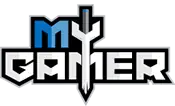They say you never forget your first time. For me, it was the summer of ’91. I was inexperienced and had a hard time figuring things out. I almost gave up at times, but before I knew it, I was hooked on RPGs.
Final Fantasy IV Advance is a remake of the classic SNES role player Final Fantasy II (which was number four in Japan). Knights, airships, crystals and chocobos are all accounted for in this old-school title, with no pretty-boy hero, complex leveling system or J-pop musical numbers to slow things down. Though the original was already one of the best RPGs ever made, Square-Enix has added several features to make this the quintessential Final Fantasy that every fan of RPGs should play.
The story follows a dark knight named Cecil. As captain of Baron’s Air Force, Cecil kills and pillages from innocent people in search of the four elemental crystals. But, as his conscience catches up with him, he must confront the king and redeem himself of his many sins. Of course, I can’t explain the story in depth without giving spoilers, so let me simply say that the story is well scripted and keeps the player’s interest from beginning to end. The characters Cecil meets are surprisingly well developed in a short amount of time. Just don’t get too used to having any one of them in your party for long, as the story keeps the party fresh with new faces jumping in and out of the group constantly.
The party can consist of up five characters that can be positioned in either the back row for extra defense, or the front row for better melee. Every character has his own unique list of combat abilities, like Edward’s status afflicting sing ability, or Rydia’s summon spells. Since characters come and go often, the player will have to constantly adapt as new combinations of abilities fill the party. A useful feature of the magic system is that nearly any spell can be cast on multiple targets at once. This comes in handy when you want to make quick work of random enemies.
The player can choose for battle to occur in either active or wait mode. In wait mode, time freezes as each character’s turn comes up and the player can carefully chose his actions. But in active mode, a charge timer constantly fills for each monster, and they won’t wait for the player to make up his mind before attacking. Not even pausing the game can slow them down. Though it adds to the game’s difficulty, active mode can become frustrating when your spell list gets too long, and let me make one thing abundantly clear about this game; the battles are HARD!
Though the original SNES version toned down the difficulty for U.S. players, this one pulls no punches. Unless the player has leveled up a lot, most encounters have the potential to wipe the party out. Enemies usually require a specific tactic to kill them without draining the party. Sometimes this is as simple as using the right elemental spell, other times it will require something subtler. Of course, if the enemy catches you by surprise or you just don’t feel like fighting another platoon of ogres, running away is as simple as holding down the shoulder buttons, and it rarely fails. However, the true cruelty of this game is evident in the inescapable encounters that lie in wait within certain treasure boxes. These rare encounters are usually death traps, with an enemy who will cripple the party in minutes unless the player can quickly devise a winning strategy. The rewards for beating these traps are often worth the effort, but it can take several tries to do so. Boss battles are similarly brutal, but you don’t have the luxury of being able to skip them.
Of course, if you’ve played the original, you know all of this already. So why should you play this game if you’ve already beaten the original? Though it’s only available near the end of the game, the player can now choose any character to be in his party. With two new dungeons to explore, the player will get a good amount of use out of this. There are even ultimate weapons to discover for each character and several new abilities giving the player more options in battle than before.
New plot sequences have been added, including a new opening. There are also scenes relating to whom you choose to enter the final dungeon with. The translation is better overall than before, and more true to the original, though a few poorly translated lines still linger.
The graphics have received a minor upgrade, most noticeably the backgrounds during combat. Character portraits have been redone and now accompany a character’s dialogue. A few new cinematic effects are also used during spell casting and plot sequences.
The soundtrack by Nobuo Uematsu, like the game, is classic. Had they done nothing to improve it, I still would have rated it highly, but with a few remixed songs to spice things up, I am very pleased. I only wish the battle music would change up more often. The sound effects can be a little cheesy at times, but anything more elaborate would seem out of place in a remake like this.
Final Fantasy IV Advance holds its own against modern RPGs by delivering the basic elements players want: a good story, involving gameplay and challenge. It’s doesn’t do anything new, it’s just the best at what it does. If you’re new to RPGs, this is the best title to start off with, and if you’re tired of the flashy bells and whistles that go into most RPGs, I can suggest no better alternative.
President & CEO
















Leave a Reply